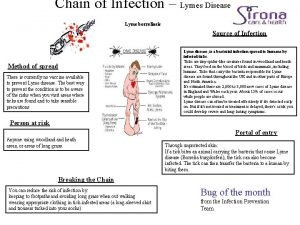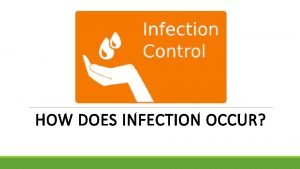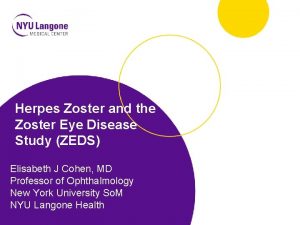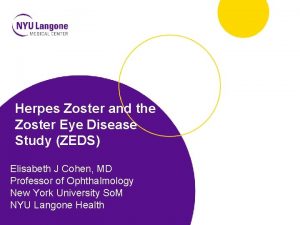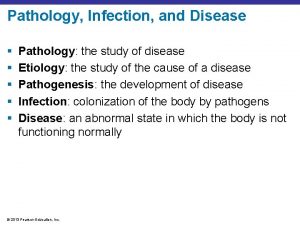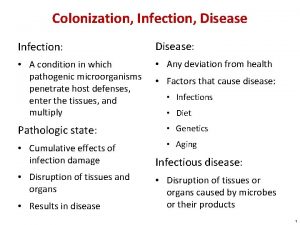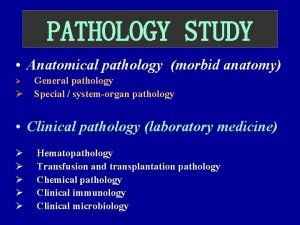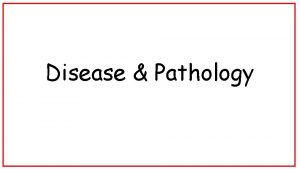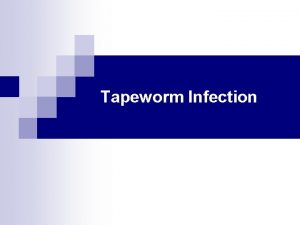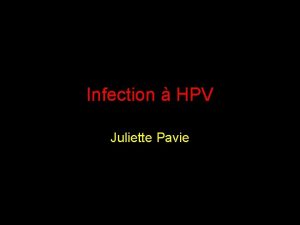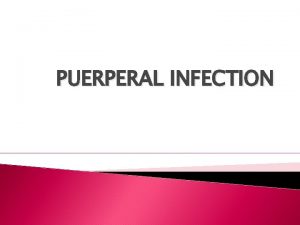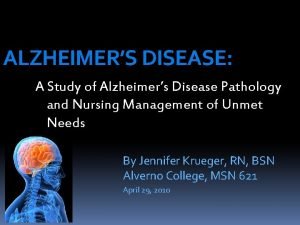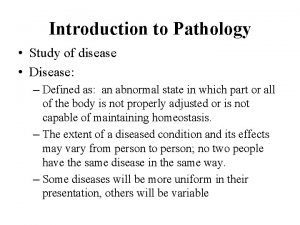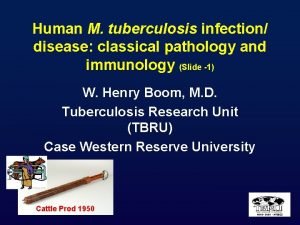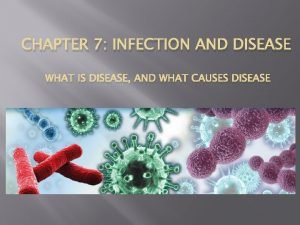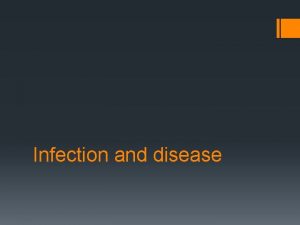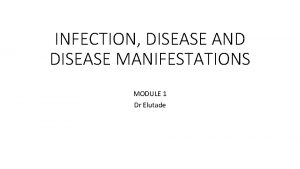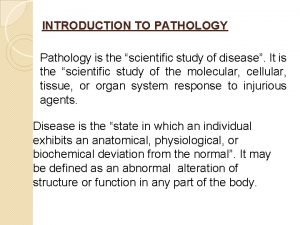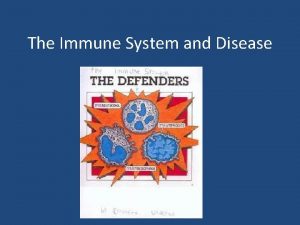Pathology Infection and Disease Pathology the study of
































- Slides: 32


Pathology, Infection, and Disease • Pathology: the study of disease • Etiology: the study of the cause of a disease • Pathogenesis: the development of disease • Infection: colonization of the body by pathogens • Disease: an abnormal state in which the body is not functioning normally Prepared by : Microbiology Team

Etiology of Infectious Diseases • Diseases can be caused by many factors: • infection, genetics, degeneration, and others. Prepared by : Microbiology Team

Koch’s Postulates Developed by Robert Koch in 1877 to establish cause of infectious diseases: anthrax and TB. Experimental Requirements: 1. Same pathogen must be present in every case of the disease. 2. Pathogen must be isolated in pure culture.

3. Pathogen from pure culture must cause the same disease when inoculated in healthy, susceptible laboratory animal. 4. Pathogen must be re isolated from inoculated laboratory animal and shown to be the original organism Prepared by : Microbiology Team

Koch’s Postulates for Infectious Diseases Prepared by : Microbiology Team

Exceptions to Koch’s Postulates 1. Some microbes cannot be cultured in artificial media. • Treponema pallidum (syphillis) • Mycobacterium leprae (leprosy) • Ricketsias , chlamydias, and viruses only multiply within cells. • 2. One disease may involve several different pathogens. • Diarrhea • Pneumonia • Meningitis • Peritonitis • Nephritis Prepared by : Microbiology Team

3. Some pathogens may cause several different diseases. • Streptococcus pyogenes: Scarlet fever, sore throat, skin infections, bone infections, etc. • Mycobacterium tuberculosis: Causes disease of lungs, skin, bones, and internal organs Prepared by : Microbiology Team

Classifying Infectious Diseases alter normal body function and/or structure. Evidences of Diseases: • Symptoms: Subjective feelings not obvious to an observer. • Example: Pain and malaise. • Signs: Objective changes that can be measured. • Example: Fever, redness, swelling, paralysis. Prepared by : Microbiology Team

• Syndrome: A specific group of signs and symptoms that are associated with a specific disease. • Example: AIDS (Acquired Immune Deficiency) Prepared by : Microbiology Team

Classifying Infectious Diseases Classification based on the behavior within a host and within a given population: Communicable Diseases: Spread from one host to another, directly or indirectly. • Example: Tuberculosis, herpes, flu, AIDS, • chickenpox, mumps, polio, and hepatitis. Contagious Diseases: Spread easily from one person to another. • Example: Chickenpox and measles. Prepared by : Microbiology Team

• Non communicable Diseases: Not spread from one host to another. Caused by microbes that live outside the body or by opportunistic pathogens that live inside the body. • Example: Tetanus, botulism, and yeast infections Prepared by : Microbiology Team

Disease Occurrence • Disease Incidence : • Percentage of population that contracts a disease in a given time period. . • Disease Prevalence: • Percentage of population that has the disease during given time period. • Sporadic Disease: • Occurs only occasionally. • Example: Polio in U. S. • Endemic Disease: • Constantly present in the population. • Example: Common cold or ear infections. Prepared by : Microbiology Team

• Epidemic Disease: • Many people acquire disease in short time period. • Example: Influenza, gonorrhea, chlamydia, and AIDS. • Pandemic Disease: • Worldwide epidemics. • Example: Influenza and AIDS. Prepared by : Microbiology Team

Reported AIDS Cases in the United States Prepared by : Microbiology Team

Disease Duration • Acute Disease: Develops rapidly, but lasts a short time. • Examples: Flu and common cold. • Chronic Disease: Develops more slowly, and reactions are less severe. Tend to recur for long periods or to be continual. • Examples: Tuberculosis, hepatitis B, and infection mononucleosis. Prepared by : Microbiology Team

• Subacute Disease: Intermediate between acute and chronic. • Examples: Subacute bacterial endocarditis (streptococci). • Latent Disease: Causative agent remains inactive for a time, but then becomes active and produces disease symptoms. • Examples: Shingles, genital and oral herpes, AIDS. Prepared by : Microbiology Team

Host Resistance Determines Extent of Infection • Primary Infection: Acute infection that causes initial illness. • Example: Common cold. • Secondary Infection: Caused by opportunistic pathogen after primary infection has weakened host immune system. • Example: Pneumonia or bronchitis may develop after the common cold. • Subclinical Infection: Does not cause any noticeable illness in host. • Example: Over 90% of polio infections are asymptomatic. Prepared by : Microbiology Team

Spread of Infection • Reservoirs of Infection • Human Reservoirs : Infected individuals who may or may not present a disease. • Carriers are infected or individuals without any signs or symptoms of disease (AIDS, polio, gonorrhea). Prepared by : Microbiology Team

• Animal Reservoirs: • Zoonoses are diseases that occur primarily in wild and domestic animals. • About 150 different zoonoses are known (rabies, anthrax, and Lyme disease). • Nonliving Reservoirs: Two major sources are soil and water. • Soil: Clostridium tetani and botulinum. • Water: Vibrio cholerae and Salmonella Prepared by : Microbiology Team

Transmission of Disease I. Contact Transmission: Spread by direct indirect contact, or droplet transmission contact. A. Direct Contact Transmission: Person-to-person transmission. • Examples: Touching, kissing, sexual intercourse. Prepared by : Microbiology Team

B. Indirect Contact Transmission: Agent is transferred via a nonliving object. • Examples: Towels, eating utensils, thermometers, stethoscopes, bedding, clothes, money, and syringes. C. Droplet Transmission: Microbes are spread in mucus droplets that travel short distances (less than 1 meter). • Examples: Sneezing, coughing, talking, and laughing. Prepared by : Microbiology Team

Portals of Exit • Site at which microbes leave body. • Most common exit portals are respiratory and gastrointestinal tracts. Prepared by : Microbiology Team

Nosocomial (Hospital Acquired) Infections Any Infections acquired during the course of stay in a hospital, nursing home, or other health care facility. “Nosocomial” Greek word for hospital. • According to Center for Disease Control (CDC), 5 • 15%of all hospital patients acquire N. I. s. Prepared by : Microbiology Team

Predisposing Factors • Wide variety of microbes in hospital environment • Weakened or immunocompromised patients Chain of transmission: Mainly through direct or indirect contact. • • From health care workers to patient From patient to patient Fomites: Catheters, needles, dressings, Airborne transmission Prepared by : Microbiology Team

• Opportunistic , drug –resistant gram-negative the most frequent causes of NCI Prepared by : Microbiology Team

Control of Nosocomial Infections • Aseptic techniques. • Frequent and adequate hand washing. • Avoid unnecessary antibiotic prescriptions. • Avoid unnecessary invasive procedures. • Hospital infection control staff members are responsible for overseeing the proper cleaning , storage , and handling of equipment and supplies. Prepared by : Microbiology Team

Emerging infectious diseases • New diseases and diseases with increasing incidences are called (EIDs) e. g. Anthrax. • Causes: • Use of antibiotics and pesticides, climate changes , travel , the lack of vaccinations. Prepared by : Microbiology Team

Epidemiology • The science that studies when and where disease occur and how they are transmitted in population, incidence and frequency of disease. Prepared by : Microbiology Team

• Descriptive epidemiology: data about infected people are collected analyzed. • In analytical epidemiology: a group of infected people is compered with an uninfected group. • In experimental epidemiology : controlled experiments designed to test hypothesis are performed. Prepared by : Microbiology Team

• Case reporting: provide data on incidence and prevalence to local , state , and national health official. Prepared by : Microbiology Team

Prepared by : Microbiology Team
 Puncture resistant container
Puncture resistant container Chapter 19 disease transmission and infection prevention
Chapter 19 disease transmission and infection prevention Chapter 19 disease transmission and infection prevention
Chapter 19 disease transmission and infection prevention Chain of infection for lyme disease
Chain of infection for lyme disease Diseases spread by pathogens
Diseases spread by pathogens Bharathi viswanathan
Bharathi viswanathan Congestion intestinal
Congestion intestinal Jewish chronic disease hospital study pdf
Jewish chronic disease hospital study pdf Pes statement for celiac disease
Pes statement for celiac disease Zoster eye disease study
Zoster eye disease study Zoster eye disease study
Zoster eye disease study Chapter 16 infection control and standard precautions
Chapter 16 infection control and standard precautions Chapter 16 infection control and standard precautions
Chapter 16 infection control and standard precautions Infection control principles and practices milady
Infection control principles and practices milady Cbic recertification
Cbic recertification Hình ảnh bộ gõ cơ thể búng tay
Hình ảnh bộ gõ cơ thể búng tay Bổ thể
Bổ thể Tỉ lệ cơ thể trẻ em
Tỉ lệ cơ thể trẻ em Chó sói
Chó sói Tư thế worms-breton
Tư thế worms-breton Chúa yêu trần thế alleluia
Chúa yêu trần thế alleluia Các môn thể thao bắt đầu bằng từ đua
Các môn thể thao bắt đầu bằng từ đua Thế nào là hệ số cao nhất
Thế nào là hệ số cao nhất Các châu lục và đại dương trên thế giới
Các châu lục và đại dương trên thế giới Công thức tính độ biến thiên đông lượng
Công thức tính độ biến thiên đông lượng Trời xanh đây là của chúng ta thể thơ
Trời xanh đây là của chúng ta thể thơ Cách giải mật thư tọa độ
Cách giải mật thư tọa độ Làm thế nào để 102-1=99
Làm thế nào để 102-1=99 độ dài liên kết
độ dài liên kết Các châu lục và đại dương trên thế giới
Các châu lục và đại dương trên thế giới Thơ thất ngôn tứ tuyệt đường luật
Thơ thất ngôn tứ tuyệt đường luật Quá trình desamine hóa có thể tạo ra
Quá trình desamine hóa có thể tạo ra



